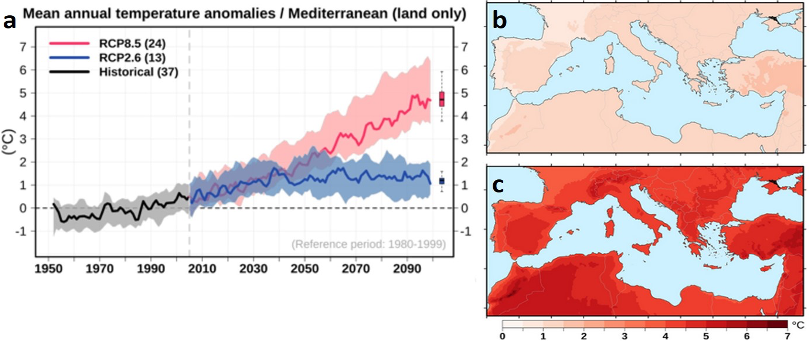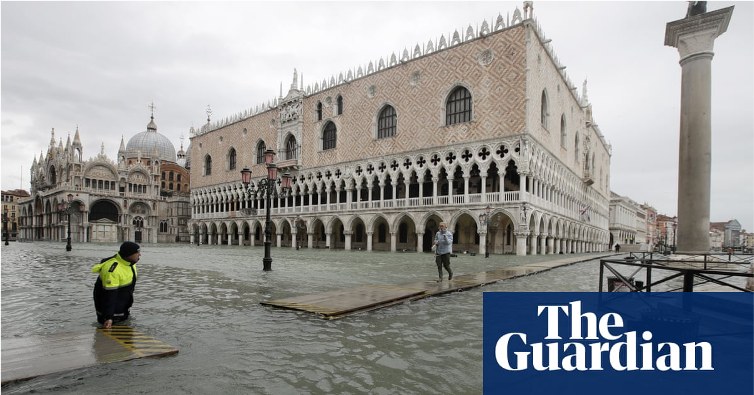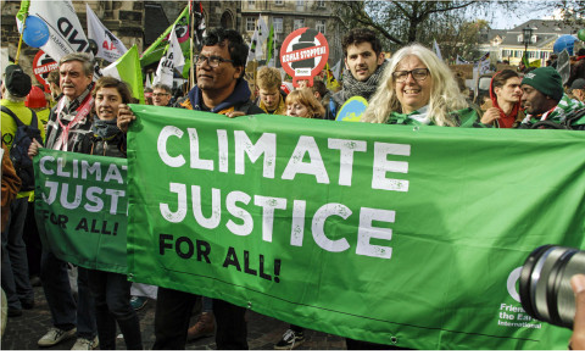The first report on the environment and climate change produced by the MedECC network was released in November 2020. It is sounding the alarm!
This report as well as its Summary for Policymakers of around 30 pages are available here.
 The factors of environmental change in the Mediterranean, observed and projected in 2020 by MedECC
The factors of environmental change in the Mediterranean, observed and projected in 2020 by MedECC
- When the globe warmed by 1°C compared to the pre-industrial level, the Mediterranean Basin (land + sea) warmed by 1.5°C, greatly exceeding 2°C in summer.
- Warming could additionally increase between 0.5 and 6.5°C by 2100 depending on the climate change mitigation scenario; only the lower limit is compatible with the 2015 Paris Agreement.
- The sea surface will also become warmer by 1 to 4°C depending on the scenario.
- This implies more intense, longer and more frequent land and sea heat waves; the 2003 heat wave will become the norm!
- Summer precipitation will become rarer: a decrease of 10 to 30% depending on the location, with a risk of increased desertification and water scarcity.
- More heavy rains and therefore flooding is projected during other seasons.
- The sea level rises faster like in the world’s oceans: 6 cm during the last 20 years.
- It will continue: 40 to 100 cm by 2100 depending on the mitigation scenario, and possibly more than one meter.
- The absorption of CO2 by the sea results in the sea water acidification, adding pressure on biodiversity.
Non-climatic factors
Non-climatic factors are diverse and often amplify the effects of climatic factors
- These factors include among others rapid urbanization, pressure from tourism, land degradation, overfishing and intensification of agriculture.
- Air pollution (sulfur, nitrogen oxides, ozone, particles, etc.) increases mainly due to land transport and maritime activity; high temperatures increase the effects of this pollution on health.
- Marine pollution comes from agricultural, industrial and household waste, including plastics; this results in outbreaks of jellyfish, mucilage and algal blooms.
- Non-native marine species (tropical fish, algae, etc.) come from the Suez Canal, boats, the Strait of Gibraltar and intensive aquaculture.
- Terrestrial non-native species (exotic plants and animals, species harmful to agriculture, etc.) become more and more invasive.
 Environmental changes in the Mediterranean coastal systems
Environmental changes in the Mediterranean coastal systems
The risks
- The Mediterranean coastal zone is more vulnerable to sea level rise than other coastal zones, because low tides led to building and settling very close to the coastline.
- The coastline is regressing and this is amplified by the reduction in sediment flows linked to dams on rivers and increased droughts.
- The risk is important for the inhabitants, very numerous on the coast, but also for our cultural heritage.
- The intensification of urbanization and the increase of the population, in the South and in the East, are amplifying factors.
Adaptation measures
- Protect infrastructure and cultural heritage close to the coast.
- Protect coastal ecosystems (dunes, lagoons, deltas, wetlands), which play a role of protection against the retreat of the coastline.
- Favor nature-based soft methods rather than hard methods (dikes).
- Protect and restore the Posidonia meadows.
- Reforest the upper valleys to facilitate penetration of water into the soil.
- Reduce the soil artificialization in the lower valleys and the coastal zones.
 Environmental changes in the Mediterranean in the field of water and agriculture
Environmental changes in the Mediterranean in the field of water and agriculture
The risks
- The Mediterranean paradox: stronger and more frequent floods in autumn / winter and increased droughts in summer!
- In the South and East of the Mediterranean Basin, agriculture is the largest consumer of water.
- With the reduction in runoff and the aquifer recharge together with a higher pressure of use, water scarcity is expected, especially in the southern and eastern regions which already experience low resource. 180 million people suffer from water scarcity.
- The quality of water also decreases; the ground water becomes saltier.
- This shortage will lead to more and more conflicts among users, in particular agriculture and tourism, as the needs of thess sectors culminate in summer.
- Irrigation demand is expected to increase by 4-18% by 2100. Demographic change, particularly the growth of large urban centers, could increase this demand by 22-74%.
Adaptation measures
- We must improve the efficiency of water use (limit losses, waste), the reuse of wastewater, the aquifer recharge.
- Develop sustainable tourism.
- Establish integrated water resources management plans; foster inter-state collaboration.
- Water desalination is an option but with renewable energies.
- Dams to make water reservoirs are also an option provided that the environmental and social consequences are taken into account.
- Use more ecological methods in agriculture (agroforestry) which saves water and greatly reduces chemical inputs.
- Agroecology and permaculture are methods of producing healthy food and improving soils.
- Promote the Mediterranean diet based on cereals, seasonal fruits / vegetables, less meat, fish, which is good for the climate and for health.
 Environmental changes in the Mediterranean marine ecosystems
Environmental changes in the Mediterranean marine ecosystems
The risks
- Acidification combined with increased temperatures strongly impacts many marine organisms such as corals, gorgonians, shellfish.
- Many endemic species are replaced by invasive species from the Red Sea and the Atlantic Ocean.
- We have lost 41% of marine species at the top of the food chain since 1950 due to climate change and overfishing.
- The oxygen level in water is depleted: each degree of warming induces a 10% increase in the hypoxic water zone.
- The fish size has decreased in average by 20 to 30% since 1950.
- Jellyfish and some algae become more abundant.
- Unsustainable fishing practices, invasive species, warming, acidification and water pollution threaten marine food production and may lead to local extinction of more than 20% of exploited marine fish and invertebrates by 2050.
Adaptation measures
- Develop monitoring, observation and research projects.
- Impose sustainable practices for fishing and tourism.
- Reduce pollution from agriculture, industry and household waste; manage and recycle waste.
- Develop marine protected areas.
 Environmental changes in the Mediterranean terrestrial ecosystems
Environmental changes in the Mediterranean terrestrial ecosystems
The risks
- In the countries of the northern shore, forest area increases at the expense of agriculture and extensive grazing and in the South, ecosystems are still threatened with fragmentation or disappearance linked to agriculture, overgrazing and overexploitation of firewood.
- Changes in terrestrial biodiversity are moving in the direction of homogenization and simplification of biotic interactions.
- For several decades, half of wetlands have been lost or degraded.
- There is a strong extension of dry areas, an increase in burnt areas during episodes of mega-fires; if small fires are decreasing thanks to effective controls and prevention policies, mega-fires are expected to become more and more difficult to control.
Adaptation measures
- Develop conservation policies, promote connectivity between protected areas, promote biodiversity.
- Protect wetlands, preserve riparian areas and reduce water abstraction.
- Modify silvicultural practices, put in place adequate forest management policies, favor species adapted to a drier and warmer climate.
- Implement fire prevention policies.
 Environmental changes in the Mediterranean in the field of health
Environmental changes in the Mediterranean in the field of health
The risks
- High temperature and pollution cause respiratory and cardiovascular diseases.
- The impacts of climate change in urban areas are expected to be disproportionately high due to the concentration of population and infrastructure.
- There are more and more vectors of infectious diseases such as mosquitoes and ticks, a few cases of tropical diseases linked to these vectors have been recorded.
- Extreme destructive events (storms, floods) cause and will increasingly cause material damage but also death and psychological shocks, including mental illness.
- These risks are particularly strong for disadvantaged populations, including elderlies, children and people with low income.
Adaptation measures
- Cities particularly prone to heat waves should be managed to increase resilience to environmental changes, by promoting green areas, urban vegetation and the reduction of mineralization.
- Exposure to hazards must be reduced by, for example, reducing soil impermeability.
- Develop integrated climate plans and put in place prevention and alert plans.
- Traditional uses and knowledge should be applied, as they have been able to preserve living conditions in dense cities.
- Develop health care systems.
- Develop inter-state collaborations, for example concerning pollution.
 Reducing emissions and carbon sequestration in the Mediterranean
Reducing emissions and carbon sequestration in the Mediterranean
The energy situation in the Mediterranean
- Greenhouse gas emissions in the Mediterranean Basin represent 6% of global emissions, corresponding to an equivalent proportion of the global population.
- Fossil energy represents 76% of the energy mix of the Mediterranean Basin.
- The North of the basin will see its energy demand decreased by 10 to 23% in 2040 according to the selected transition scenario, mainly because of a decrease in its population, its deindustrialisation, but also the increase in its energy efficiency.
- The South and East of the basin will see its demand increased by 55 to 118% in 2040 for the opposite reasons, namely its population growth, its economic development and its delay in the implementation of its energy transition.
- The energy sector in the South and East is still severely disorganized and lacks integration.
Climate change mitigation
- As elsewhere in the world, it is urgent to radically reduce general energy consumption and radically reduce the share of fossil fuels in the energy mix; energy efficiency needs to be greatly improved.
- The Mediterranean Basin has enormous potential for renewable energy, especially in the South and East, and it must accelerate its transition to meet the Paris Agreement; the share of renewables should reach 13 to 27% in 2040.
- The South and East energy market should be more integrated with better cooperation between countries.
- It will not be enough to reduce emissions for the Mediterranean to comply with the Paris Agreement; carbon sequestration measures will have to be put in place.
- Nature-based solutions are to be favored. The most effective solutions are offered by wetlands, forests and especially soils on condition that appropriate agroecological and silvicultural practices are used.
 Adaptation and mitigation must be done within the framework of the sustainable development goals
Adaptation and mitigation must be done within the framework of the sustainable development goals
- Currently, poverty, social inequalities and gender inequalities hamper sustainable development and climate resilience in Mediterranean countries.
- Adaptation involves : improving housing and infrastructure, educating and raising awareness among the most vulnerable communities, and strengthening prevention, emergency and health systems services.
- Culture is a key factor for the success of adaptation policies in the ancient, multicultural and extremely varied framework of the Mediterranean Basin.
- Policies on climate adaptation and environmental resilience must take into account issues such as justice, equality, fight against poverty, social inclusion and redistribution.
The text is also available in French (here).
